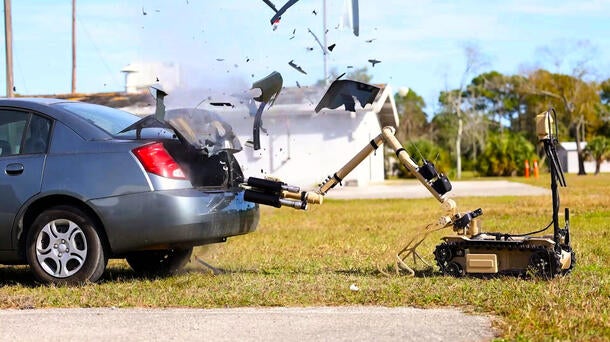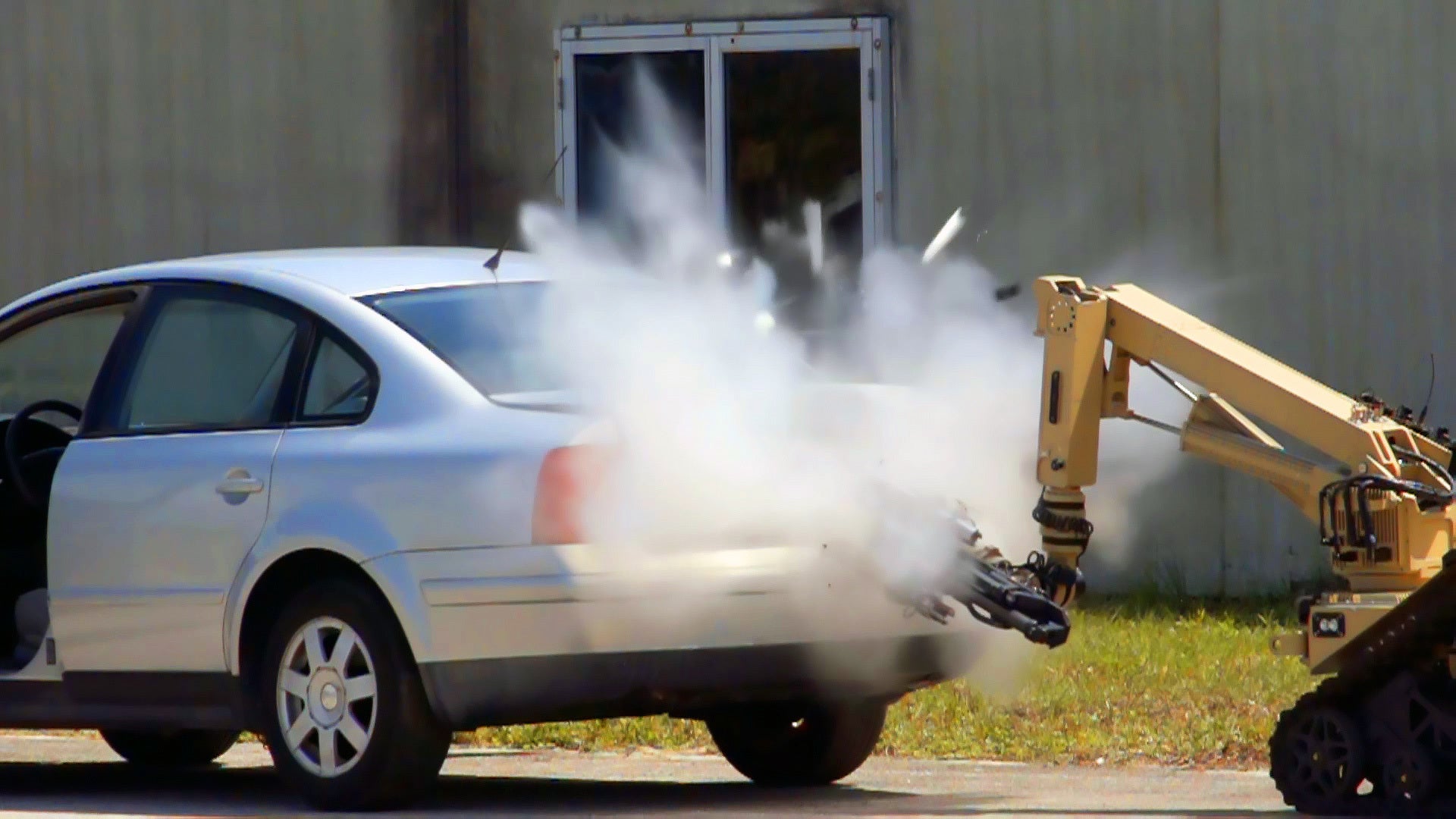Power
The majority of larger robots currently on the market today are not sufficiently equipped to deal with and protect against the sheer power exuded by high-recoil disruptors upon firing, which can cause significant damage. As a result, it’s even less likely that mid-sized robots are ever harnessed to fire these types of disruptors, as their arms don’t have the strength or flexibility to absorb the recoil.
T4 is the first mid-sized robot in the world able to fire high-recoil disruptors repeatedly without taking damage. Despite its compact size, its arm is exceedingly strong and able to lift payloads of up to 55 kg while still remaining sufficiently precise for more intricate tasks. Able to accommodate HOTROD, PIGSTICK and PAN disruptors, it offers outstanding resilience to recoil forces. Thanks to multiple patented recoil-absorbing technologies, both the T4 and T7 manipulator arms can take a lot of impact, offering significant durability and flexibility ideal for survivability in the field.
Weight
As most disruptors are fairly heavy, they limit how much weight a robot arm is physically able to lift. This means many larger robots are frequently unable to carry both a disruptor and an additional payload at the same time, let alone be carried at all by most mid-sized robotic systems.
Both T4 and T7 have outstanding manipulator strength, enabling them to have multiple disruptors mounted while still lifting heavy loads. Moreover, T4’s unique omni-directional stabilisers provide added stability, enabling it to extend its arm to the side to fire at targets without any risk of toppling.
Accuracy
Typically, the wrist of a robot arm is weaker than the middle or base of the arm, so very often other robots will mount disruptors to the robot’s forearm to best negate the impact of the recoil. While this approach reduces damage, it significantly reduces the robot’s ability to position and orient the disruptors. As a result, operators may not be able to align the disruptors to achieve the desired effect on the target.
T4 and T7 both mount disruptors at the end of the arm alongside the robot’s gripper, improving aiming flexibility and enabling high-power to be available at maximum reach and optimum angles. This ensures that even devices placed on high shelves or in overhead bins can be accurately disrupted.
L3Harris’ robust, ruggedised and highly reliable T7 and T4 robots help EOD operators realise the full potential of high-power disruptors. They make it possible to achieve accurate and impressive power on target without the risk of damage to the robot, offering all of the precision, durability and dexterity required to maximise mission success.

